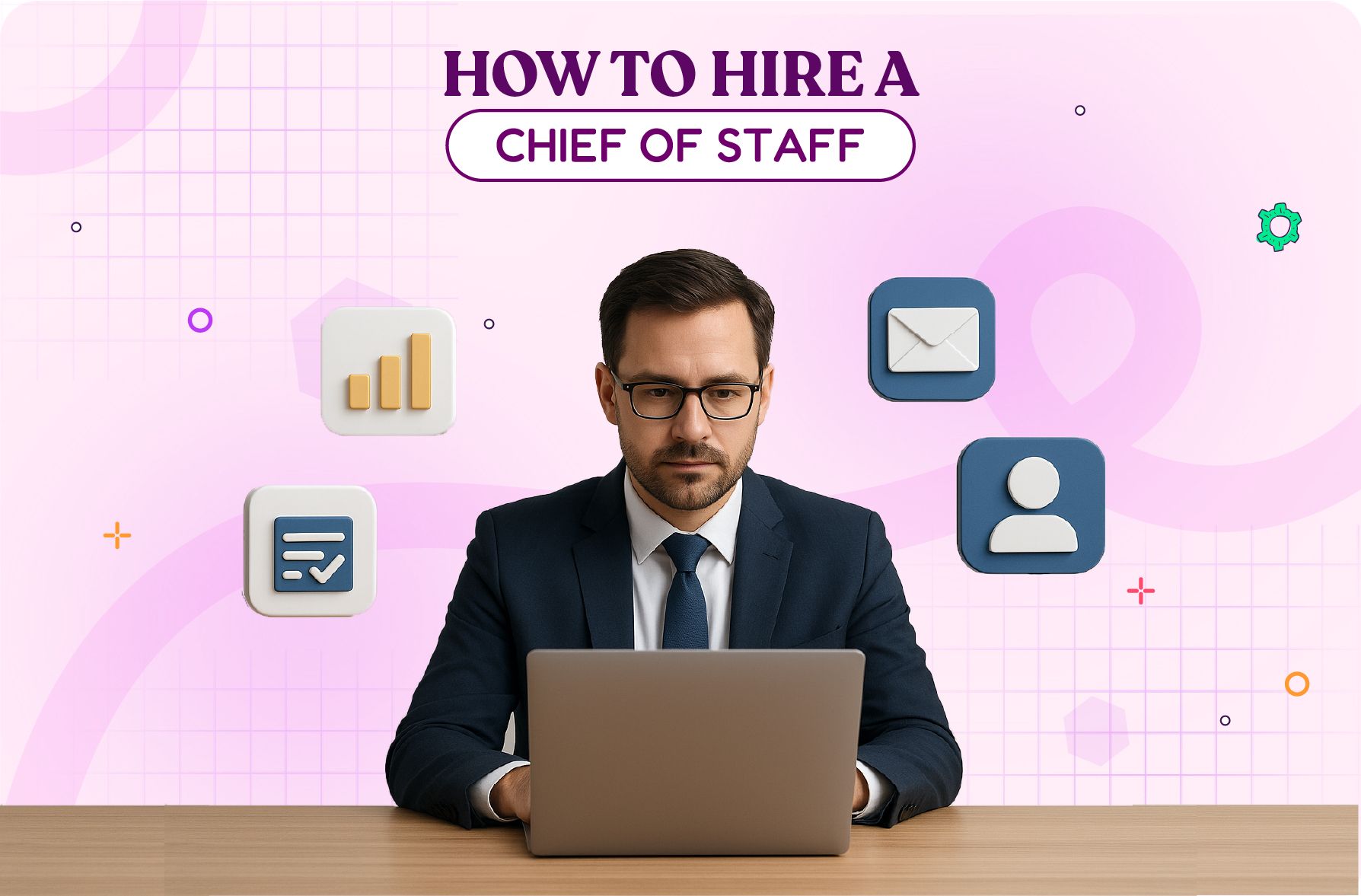When job seekers can have a helpful list of dos and don'ts to perfect their resume, why can’t recruiters have one to screen them? A recruitment process can be strenuous, with laborious steps that can pile on for weeks and sometimes months, but each is equally important. One among them all is candidate screening. It is one of those steps that, if done correctly, can be the difference between making a good hire quickly or being stuck in the boot loop of sourcing, screening, and re-sourcing.
If you are a traditional recruiter with some years of experience to show, you would agree that screening resumes is, in fact, a difficult task. Reading tens of CVs, reviewing their details, and shortlisting the most suitable candidates among the unqualified ones is an intricate part of the hiring process. So, naturally, one would need to agree that a lot depends on this process going right. And that’s the topic in the spotlight in this blog. The blog details several ways to revamp candidate screening strategies to make them more effective. Moreover, if you haven’t reviewed your recruitment strategy in a while, this blog will certainly force you to go back and take a deeper look.
The Don’ts of Candidate Screening
Don’t let bias take control. Be objective
Name, age, or gender bias, specifically unconscious bias, can set in the hiring process at any stage, most commonly during candidate screening. While we can only warn about intended bias, there are unconscious biases that sometimes go unnoticed by recruiters, and one needs to put extra effort into mitigating it. Unconscious bias means making decisions based on hidden prejudices and stereotypes. It affects hiring, keeping unfairness in organizations. Conscious bias is when you know you're biased, like during hiring. Unconscious bias often comes from being tired or rushed. For example, focusing too much on "culture fit" can leave out diverse people. Biases like these affect the workplace, stopping inclusivity. Fixing unconscious bias is key for diverse workplaces.
It sounds easy: judge candidates fairly. But in reality, it's hard. Our brains struggle with lots of information. Plus, reading tons of applications daily makes bias likely. Don’t be biased.
Don’t forget to check the candidate's background
Background checks are now standard in many industries. Companies do them to make sure they hire the right people. It’s important that the shortlisted candidates' profiles, during the screening process, are taken through a background check using background check software. It’s always a good option to wait for background check results before hiring. It saves from lawsuits for bad hiring or hiring someone who lied on their resume.
Why? Bad hires can hurt a company's reputation, let alone slow down its growth. With a tough job market, some candidates might lie or hide things in their resume. So, it's smart to do thorough background checks every time.
Commonly, background checks happen after you pick a candidate but before you hire them. What's checked depends on the job and its needs. They're crucial for any organization. You can also run exclusion screening at this stage to ensure candidates aren’t flagged on sanctions, watchlists, or industry exclusion lists, reducing legal and compliance risks later.
Why are they so important?
- Better workforce: Background checks help find good candidates with the right experience and skills.
- Protecting reputation: They avoid problems that could harm a company's reputation.
- Preventing crime: They stop criminal activity, especially in big companies.
- Following laws: Some places legally need background checks.
So, they're not just a formality. They're vital for a successful hiring process.
Don’t spend too much time on individual resumes
Often you’ll find resumes with impeccable accuracy, zero grammatical errors, and detailed descriptions. It will seem like the perfect resume for the job, and instead of moving on to other candidates, you will spend more time digging deep into this specific candidate, going as far as reaching them on LinkedIn. But, when you finally get a response from them, it’s - “sorry, I have found an opportunity at another organization”. That’s disheartening and frankly unacceptable. The only option you have now is to go back to your screening process. Now, isn’t that an overkill? Prevent this from happening. Don’t spend excess time on particular resumes, standardize your recruiting process and make sure you stick to it throughout it. You'll certainly see better results.
Don’t be fooled by over-qualification, judge comprehensively
When reviewing a resume, it's easy to be dazzled by an applicant's impressive qualifications. However, it's essential to evaluate the entire document comprehensively. Overqualification can sometimes be a red flag, indicating potential mismatches between the candidate's skills and the job requirements. While extensive qualifications may indicate competence, they may not necessarily translate into the right fit for the role.
Instead of solely focusing on qualifications, take the time to examine the candidate's relevant experience, skills, and accomplishments. Look for alignment with the job's specific demands and the company's culture. Consider factors such as adaptability, willingness to learn, and growth potential.
Furthermore, don't overlook the possibility that a seemingly overqualified candidate may be genuinely interested in the position and willing to contribute effectively. Engage with the candidate during the interview process to gain insights into their motivations and aspirations.
Don’t forget to take some assistance
Stressing yourself with the manual burden of screening candidates is a bad judgment on your part. There are ample screening tools powered by AI that can assist you in cutting short your resume screening time in less than half. The right tools can drastically reduce the risk of manual error and unconscious bias that’s common with manual hiring processes. With talent intelligence, you simply need to upload your job description and the candidate resumes on the tool and it will categorically screen each candidate against the job description and find the best-fitted applicant for the job, effectively. Choosing the right AI recruiting tool can not only reduce time to fill but also help in making qualified hires more often.
The Dos of Candidate Screening
Do provide a clear and detailed job description
The first step towards attracting the top talents is focusing on building an accurate job description that details everything from the job role to the company culture and the description of an ideal candidate. The better you are at painting a picture of how the applicant is going to feel like working at your company, the more qualified your candidate pool will be. Moreover, your job description will also allow them to make a thorough decision about whether they want to apply or not. A candidate database that’s narrow, and containing the right candidates is always better than one that’s filled with unskilled applicants. If you have difficulty perfecting your job description, use an AI job description generator that can assure you don’t miss out on any detail.
Do focus on accomplishments too
When reviewing a candidate profile, one of the first things recruiters do is study their job experience or education. Although that’s an important aspect, one should not miss out on the accomplishments that the candidate has garnered over the years. For example, you might need a candidate with leadership skills, but their job experience would denote that they never had been in a leadership role. However, if their accomplishment denotes that they successfully led their company football team to victory, it might be a sign you wouldn't want to miss.
Do make the final call, don’t rely on mindless parsers
Make your own hiring decisions: avoid blindly trusting parsers. Relying solely on automated parsers can overlook vital qualities. By making the final call yourself, you ensure thorough evaluation. Parsers can often miss nuances crucial for cultural fit and job performance. On the other hand, your judgment adds depth to the selection process. Sometimes you have to take over the algorithms that can dictate your decisions. Remember, they lack human intuition. Taking charge ensures a tailored approach to each candidate. Mindless parsing can disregard exceptional talent. Your direct involvement fosters a fairer, more insightful assessment. Trust your instincts over automated tools; they can’t capture the full candidate picture.
How Skima makes candidate screening seamless for you?
Skima is a talent intelligence tool that helps you discover the right candidates from a swamp of applicants. With an advanced AI Matching Score, the platform compares your candidate pool with the job description you provide and uses tens of parameters to rank each candidate meticulously. Meaning, your unorganized candidate data is screened, and you can see the candidates in a categorized manager running from the most relevant to the least. Just like that, you can move ahead in your hiring process with accurate screening results in minimum time.
End Note
In conclusion, effective candidate screening is pivotal in the hiring process, influencing the quality and efficiency of recruitment. Avoid unconscious biases, prioritize background checks, and streamline your review process to avoid unnecessary delays. Embrace AI tools like Skima to enhance screening accuracy and expedite hiring decisions, ensuring better outcomes.



